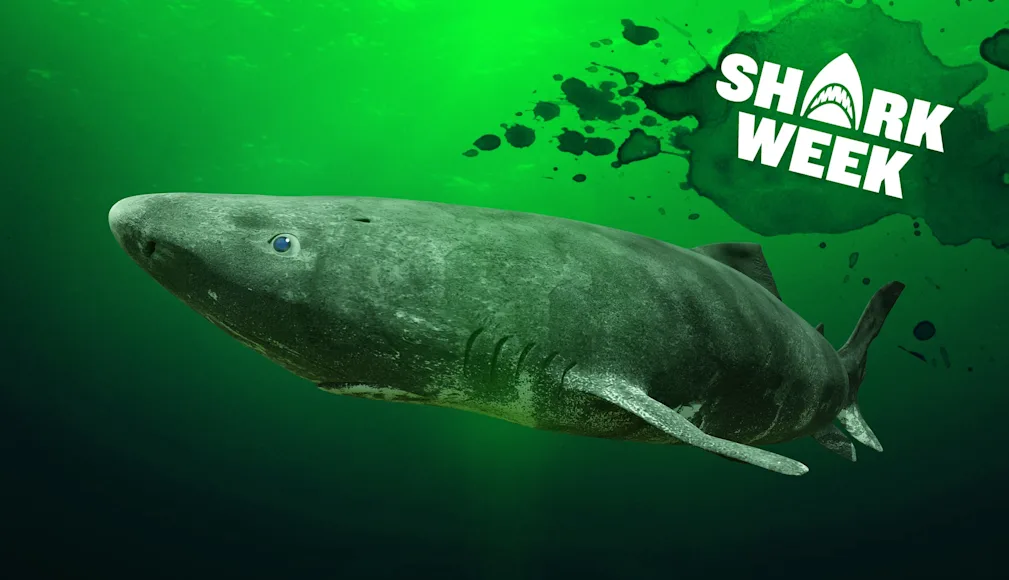Revered and feared, sharks hold an unparalleled place in the human imagination. They are the ocean’s apex predator. The stuff of nightmares.
The lurking specter of myths. Scientists tell us that sharks have survived five mass extinctions and have roamed the earth’s waters for 400 million years, predating the dinosaurs by half that time. It’s no wonder we are endlessly fascinated by them. So, naturally, you want to know, “How long do sharks live?” Well, we’ve got your answer.
Sharks can live anywhere from a handful of years to several hundred years, depending on the species. Because some specimens can live an incredibly long time, sharks in general are thought of as long-lived, but there’s a very wide range. So let’s break down the question of how long do sharks live, starting the a Top 10 list of the species with the longest life spans.
Table of Contents
How Long Do Sharks Live?
Top 10 List of Shark Lifespans
1. Greenland Shark
2. The Century Club – Spiny Dogfish Shark, Whale Shark, Megalodon
3. Great White Shark
4. The Half-Century Club – Tiger Shark and Common Thresher Shark
5. Great Hammerhead Shark
6. Shortfin Mako Shark
7. Dwarf Lantern Shark
8. Bull Shark
9. Blue Shark
10. Tie – Small Spotted Catshark and Angel Shark
11. Unknown
Frequently Asked Questions
How Long Do Sharks Live?
The short answer to “How long do sharks live?” is that most adult sharks end up plying their waters for 20 to 30 years. A few familiar species, including hammerheads, tiger sharks, and great whites can reach into the 40- to 70-year range. A few can even reach 100 years or more. But at the longevity apex for the apex predator sits an incredible creature that inhabits the frigid waters of the world’s northernmost oceans. So, we’ll start there with our list of the longest-lived.
The Top 10 Longest-Lived Sharks
1. Greenland Shark

The Greenland shark has the longest known lifespan of all vertebrate species at up to half a millennium. dottedyeti / Adobe Stock
Sitting alone at the top of the oceanic apex predator longevity pyramid, far above all others, is the gigantic and slow-moving Greenland shark
. Greenland sharks also take the top lifespan spot amongst all vertebrates on the planet. In 2016, in a study published in the journal Science
, shark biologists aged one to about 392 years and determined that members of the species could live 500 years or more. Half a millennium!
2. The Century Club – Spiny Dogfish Shark, Whale Shark, Megalodon
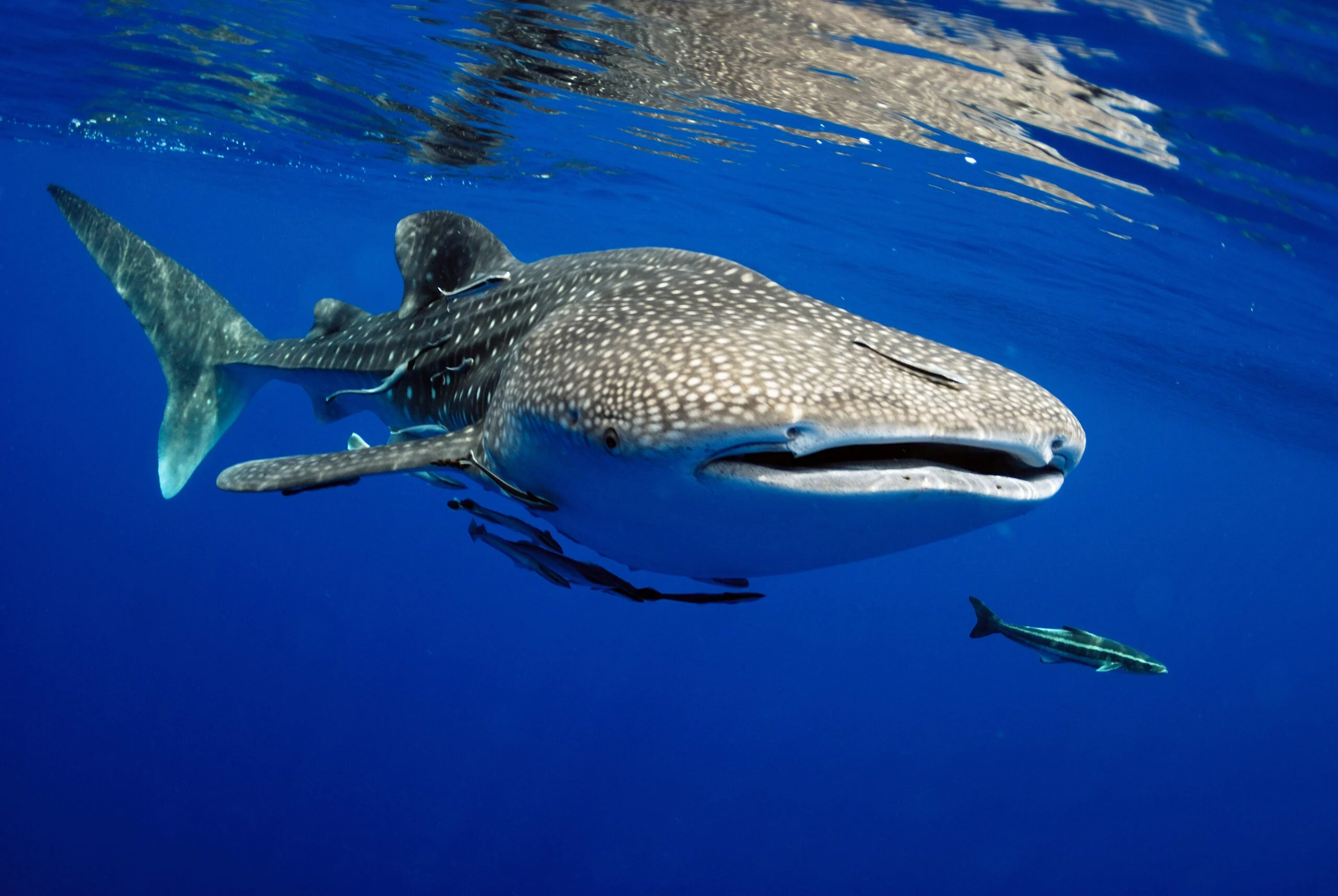
Whale sharks can live up to 100 years. A_visual / Adobe Stock
Three currently existing sharks and one extinct shark constitute the fish’s century club. Spiny dogfish sharks can live between 25 and 100 years. Whale sharks, which are the world’s largest sharks, reaching lengths of 60 feet, typically live between 70 and 100 years.
Fossils uncovered by paleontologists reveal that the now-extinct megalodon
, the largest known shark and the largest known fish ever, may have measured as much as 82 feet long. Their lifespan was estimated to be between 88 and 100 years.
3. How Long Do Great White Sharks Live?

Great whites can live for up to 70 years. wildestanimal / Adobe Stock
are not only huge and fearsome, they are huge and fearsome for a long time. Great white pups have an amazing 65 percent survival rate, which might have something to do with the fact that they are 5 feet long on the day they are born. Great whites can live between 40 and 70 years.
4. The Half Century Club – Tiger and Common Thresher Shark
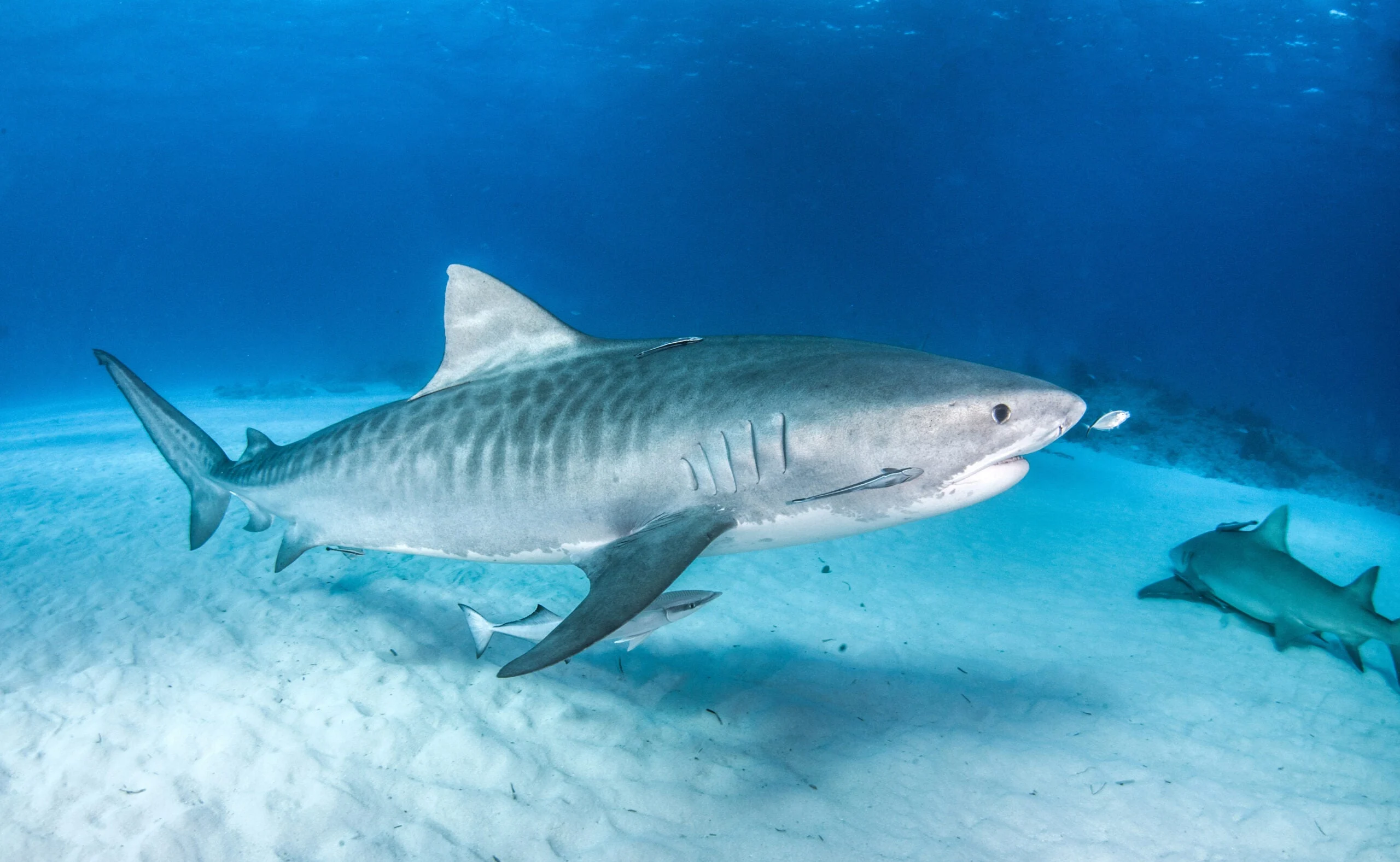
Tiger sharks can live for 50 years. Michael Bogner / Adobe Stock
Of the 500-plus species of sharks currently living on the planet, only six have been known to live 50 years or more. Tiger sharks
, which can live from 27 to 50 years, and common thresher sharks, which typically live between 19 and 50 years, barely make the list of those that can make the half-century mark.
5. Great Hammerhead Shark

Some great hammerhead sharks have lived beyond 40 years. izenkai / Adobe Stock
The largest of the nine species of hammerheads, the great hammerhead shark
, which can reach up to 20 feet long, also has the longest lifespan. They typically live between 25 and 30 years, but some individuals have eclipsed 40.
6. How Long Do Shortfin Mako Sharks Live
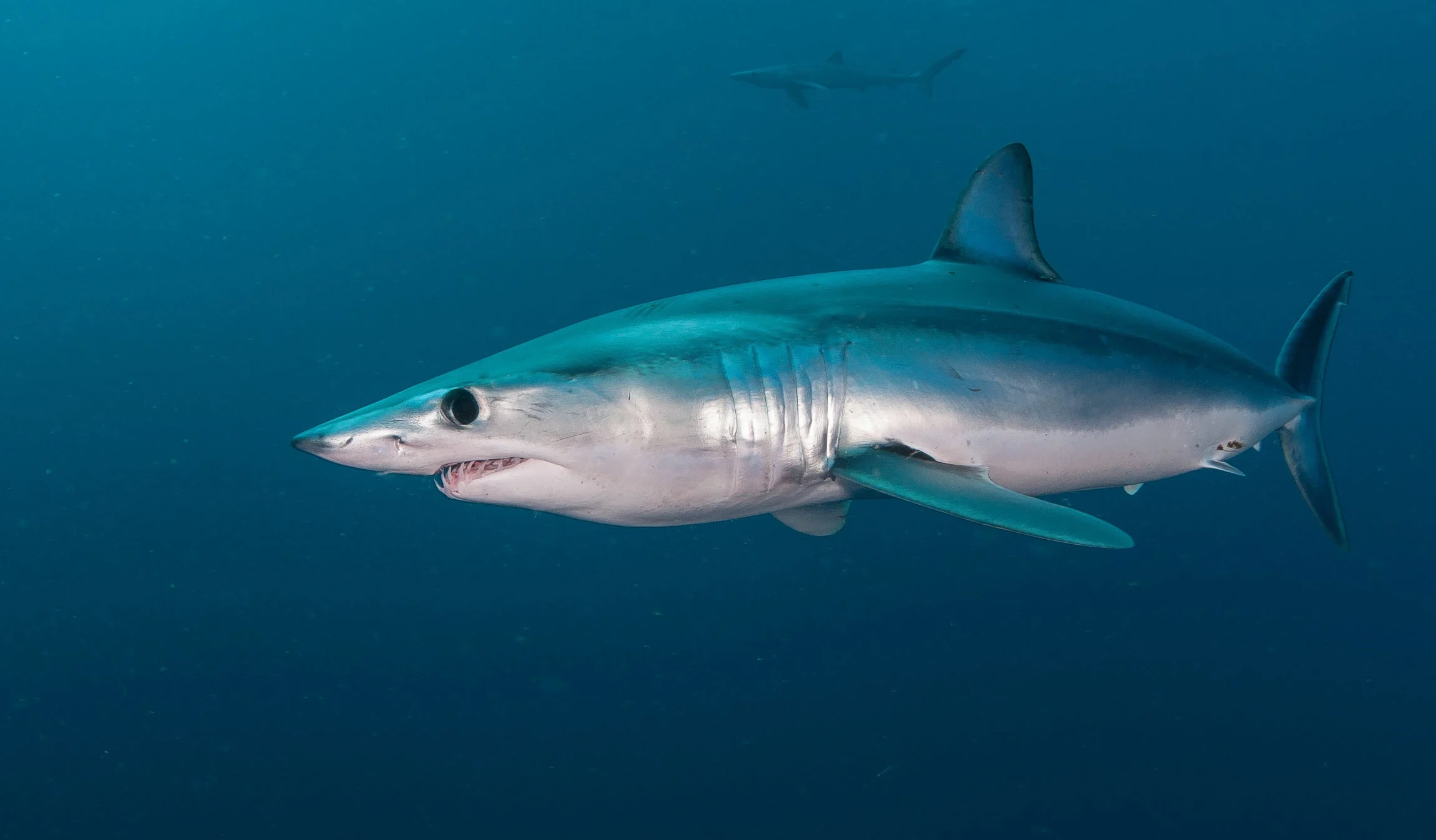
Shortfin mako sharks can live for 30 years. izenkai/Adobe Stock
have long been considered delicious by humans, which has led to severe reductions in their global population. Members of the species that can navigate past all the nets and lines live to about 30 years.
7. The Quarter Century Club – Dwarf Lantern Shark
Not all sharks match the stature of those most often depicted in popular media. The rare and bioluminescent dwarf lantern shark
tops out at a length of about 10 inches. It nonetheless has a lifespan of 25 years. Other sharks that land at the quarter-century lifespan mark include nurse, bramble, oceanic whitetip, and gray reef sharks.
8. How Long Do Bull Sharks Live
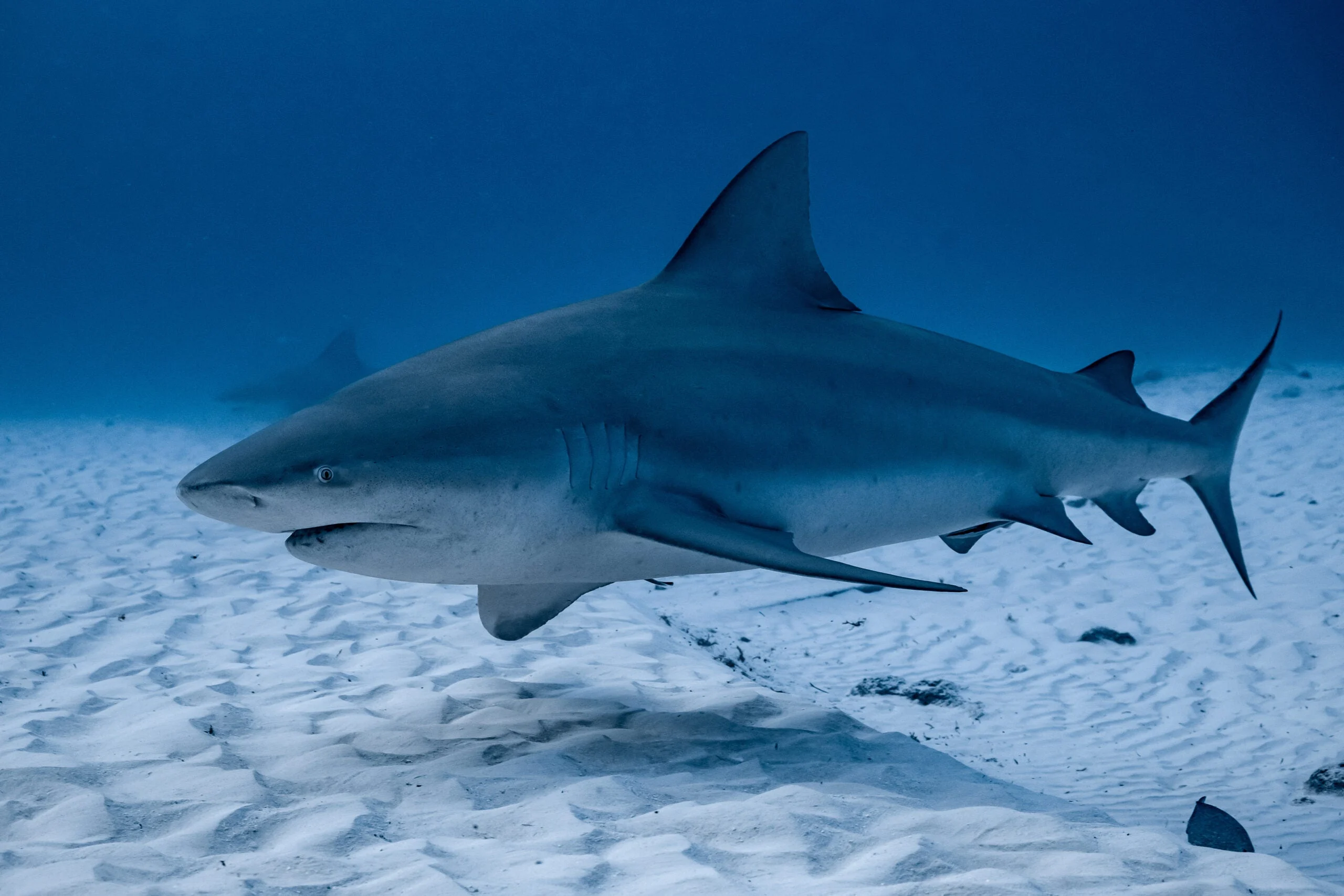
Bull sharks can live up to 16 years.
are euryhaline, which means that they spend part of their time in both ocean and freshwater ecosystems. On rare occasions, they have been spotted 700 miles upstream in the Mississippi River. They can live up to 16 years.
9. Blue Shark

Blue sharks are right behind bulls at around 15 years. prochym/Adobe Stock
give birth to litters of up to 135 pups. As they grow, they are prey to tunas, billfishes, other sharks, and humans, who, through “shark finning” and bycatch have reduced their numbers by 80 percent in some ocean regions. If they make it past all the hazards, they can live up to 15 years.
10. Tie – Small Spotted Catshark and Captive Angel Shark
, also known as the lesser spotted dogfish, a yard-long shark that inhabits sandy, gravelly, or muddy ocean floors in the Atlantic Ocean and Mediterranean Sea, can live up to 12 years. Of the 23 types of angelshark
, which resemble rays, the smaller varieties are the most popular aquarium shark. In captivity, if well cared for, they can also live up to 12 years.
11. Unknown
OK, we said 10, but No. 11 is our caveat. There are over 500 species of sharks, more than half of which live in the deep ocean and some of which are extremely rare. So, shark biologists have not had the opportunity to study all species closely and simply do not know the lifespan of many.
Frequently Asked Questions
What are the world’s longest living animals?
Greenland sharks also make the Top 10 list of the world’s longest living animals
. But they can’t hold a candle to the immortal jellyfish. These sea creatures start their lives as polyps. As adult medusas, if jellyfish experience injury or hunger, they simply turn themselves back into polyps and start the process all over again, a process which, it appears, they can repeat indefinitely if not otherwise eaten or killed.
How long do turtles live?
As is with sharks, there are many different species of turtles and tortoises. Some species live up to 10 years, while others, like Galapagos tortoises, have been known to live to 175 years in captivity.
How long do whales live?
Whale lifespans also vary widely by species. Bowhead whales can live for up to 200 years.
How long do sharks sleep?
Sharks do not sleep in the sense that humans do. For one thing, they don’t have eyelids, so they cannot close their eyes. But sharks do slow down and rest, which some scientists believe serves the same purpose as human shuteye.
Are sharks older than trees?
Trees can live from 100 to several thousand years, depending on the species. So, they blow sharks out of the water.
How many teeth do sharks have?
The answer, again, varies by species. Great whites have 50 teeth in their mouth at any given time, while whale sharks have 3,000 tiny teeth that they use to create suction for vacuuming up plankton and shrimp. Whale sharks also have small teeth or dermal denticles on their eyeballs, while other shark species have them all over their skin. (And we thought the ones in their mouths were plenty.) Sharks, of course, continuously shed and replace their teeth. Some species can go through upwards of 40,000 in a lifetime.

